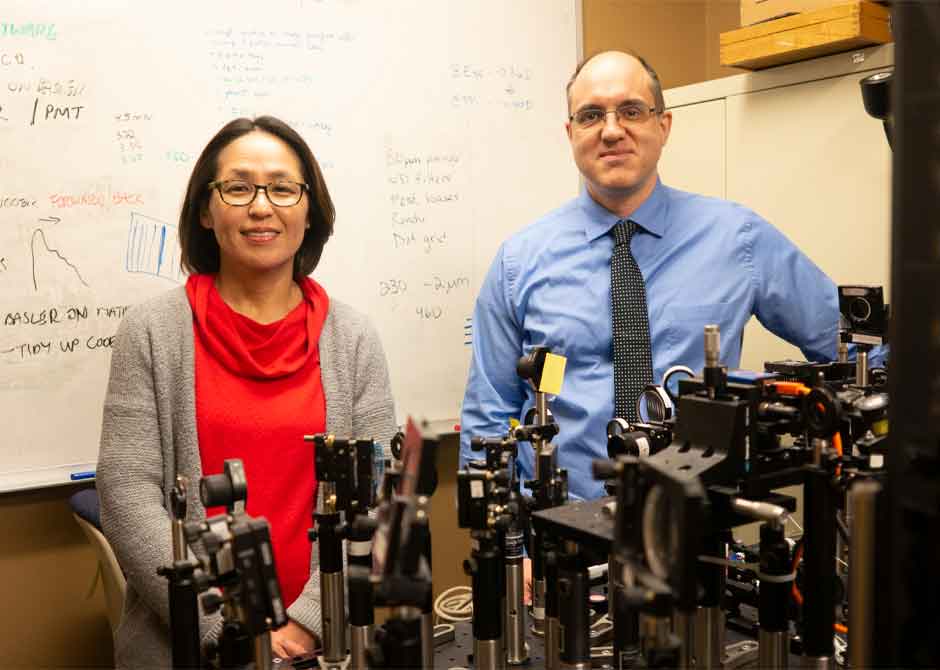Adaptive Optics
Stacey Choi, PhD and Nathan Doble, PhD

Adaptive optics researchers Stacey Choi and Nathan Doble from The Ohio State University College of Optometry work with us on a collaboration to enable us to visualize individual neurons in the retina. We are one of six such centers in the country with this technology. The goal of this work is to develop a powerful clinical tool to detect early, objective microstructural changes in the retina and biomarkers of disease. This technology will be critical to developing the objective measures needed to evaluate clinical trials of novel retinal therapeutics. Faculty from the Department of Ophthalmology who are involved in this study include Drs. Ohr, Davidorf, Abdel-Rahman and Cebulla.
Traumatic optic neuropathy and traumatic brain injury are common after battlefield trauma and other traumatic injuries. Our new collaboration with biomedical engineer Matthew Riley, adaptive optics researchers Nathan Doble and Stacey Choi, Abdel-Rahman (ocular path) and Cebulla (ophthalmology) is working towards identification of mechanisms of neuronal loss and neuroprotection.
Imaging of individual retinal ganglion cells in living human eyes
Nathan Doble, PhD, along with Stacey Choi, PhD and Mark Slabaugh, MD from the Department of Ophthalmology were awarded $100,000 over two years from the Ann Ellis Fund. The grant will use the AO-optical coherence tomography (OCT)-scanning laser ophthalmoscope (SLO) system to image individual retinal ganglion cells (RGCs) and nerve fiber bundles (NFBs) in healthy and glaucomatous eyes and correlate these findings to functional measures such as visual fields. The work will allow for a much earlier diagnosis of glaucoma than standard clinical tests and a better understanding of the pathophysiology of the disease.